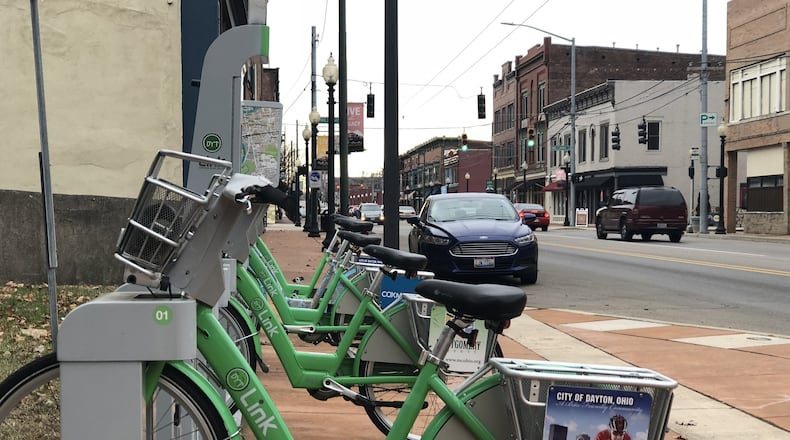MORE: First in flight, Dayton seeks to be better for bikes
Montgomery County will replace the Third Street bridge, with most of the construction expected to begin in early 2020. The more than $21 million project has been in development for years.
Right now, the bridge’s sidewalks are eight feet wide, which can make it seem unsafe to ride across on a bicycle, officials said, especially when there are pedestrians.
But the new bridge’s northern side will be 10 feet wide, and the southern side will be a 17-foot-wide multi-use trail, with two-way cycling lanes.
“The design of the Third Street Bridge includes substantial improvements for both pedestrian and bicycle traffic,” said Paul Gruner, Montgomery County engineer.
The trails beneath the bridge on each side of the river will be reconstructed and will reopen when the bridge is complete, Gruner said.
RELATED: Dayton eliminate ‘scary’ gap in bike path
And the cycling lanes will link up with the new Wright Dunbar bikeway, which the city of Dayton plans to build at an estimated cost of $330,000.
The bikeway will start at Bank Street, by the western edge of the bridge. A new bike ramp was recently built there that leads down to the path along the riverfront.
The new bike lanes will travel behind the curb and sidewalk from Bank Street across Edwin C. Moses Boulevard to Horace Street.
From there, the bikeway turns into a two-way cycling track that extends west past Shannon Street. The lanes will be protected by a curb, separating them from car traffic.
The project, paid for with federal dollars, likely will create the city of Dayton’s first protected bike lanes.
Jefferson Street in downtown Dayton is being reconstructed and will have bike lanes protected by parked cars, city officials said. That project is supposed to wrap up around the same time.
MORE: Biking in downtown Dayton is about to get easier
Protected lanes are useful because they get more people comfortable riding bikes alongside of traffic, said Laura Estandia, executive director of Bike Miami Valley.
They feel safer and more like a bike path , Estandia said, and riders are more likely to use protected lanes.
Construction on the Wright Dunbar bikeway project is expected to begin in early 2021.
The new bridge, bike lanes and cycling track will make it far easier to travel between downtown and the Wright Dunbar area by bicycle.
The Wright Dunbar business district on West Third Street already has a Link bike-share station. The station averages about 400 Link bike check-outs and check-ins each year.
Broadway Street also has some bike lanes that extend north to the Wolf Creek River.
Another major project in development is the Wolf Creek bikeway.
The city of Dayton project is expected to go out to bid in January and has an estimated cost of around $1.2 million, said Weinel.
The Wolf Creek Trail starts near the intersection of the Wolf Creek and Great Miami rivers.
The trail heads west and eventually travels along North James H. McGee Boulevard, stopping a little beyond Little Richmond Road. A big gap exists in the trail there, which stretches up to Trotwood.
But Dayton’s new bikeway will remove riders from James H. McGee Boulevard. The new bike path will head north over the river at Rosedale Drive. It will travel along the north side of the river on top of the levee.
The bikeway will cut across the former Dayton tire site and will link up with West Riverview Avenue. It will end a few blocks from where West Riverview Avenue dead-ends into Wesleyan MetroPark.
That project is expected to be completed around July.
“It’s a really big project for the city and the west side,” Weinel said.
About the Author

